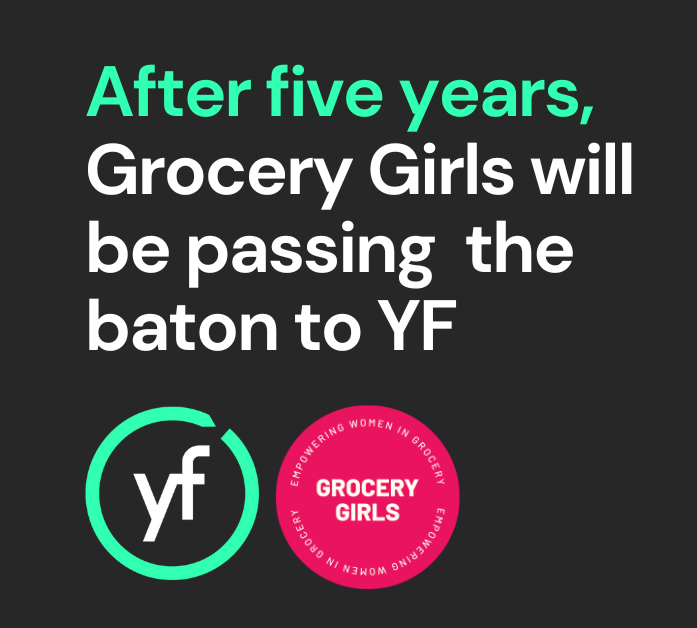
Subscribe to
YF mailing list
Subscribe today to keep informed of any important industry news and exclusive insights on how you can scale and strengthen your business.

CPIs (Cost Price Increases) – a topic on all of our minds.
As a small food and drink business you will be well aware of the rising costs that manufacturers all over the UK are facing.
Nearly two thirds of you (60%) are being impacted by rising energy prices, according to the latest figures from the Office for National Statistics (ONS), that is a higher proportion than any other industry. Around one third of you have also reported higher wage bills. And then, of course, there is the steep rise in the cost of basic ingredients and shipping.
In short, food and drink businesses like yours are being disproportionately affected by the record levels of inflation across the supply chain.
For a SME in particular, often without significant cash reserves or established supplier agreements in place, sudden cost increases like this can be incredibly challenging. It is no surprise then that many of you see no alternative but to raise prices.
However, are CPIs always the best option for your business to navigate cost increases? And if so, what is the best way to approach them?
Though they can feel like the only option, there are some alternatives you might want to consider first. Not least because – much as your business is suffering from the impact of inflation – so too are your end consumers, to whom retailers are likely to pass on any cost increases.
83% of UK adults have said they are being materially affected by what has been dubbed ‘the cost of living crisis’ with the rising cost of the average grocery bill one of their biggest concerns.
That means that many shoppers will be actively reducing grocery spend and looking for products that provide value. A big price rise from their favourite brand could therefore erode some of the loyalty you have spent time and money building up.
Before you implement a CPI, it might be worth considering these alternatives first:
Have you really challenged every cost? Review your bill of materials to see if there is a way to bring down your COGS through value engineering. Are you getting value from every cost in the COGS and LOGS at the moment or are there efficiencies either in procurement or processing?
Review your promotional laydown. If you have been relying on a high percentage of promotional deals to increase volume sales and build penetration then take a look at this first. Understand clearly how the depth of promotion for your brands compares to the category average. Understand how it is impacting your P&L. Explore whether there might be alternative mechanics you can use here to secure volume. Could you use fewer but more targeted promotions? Could you limit promotions to particular channels or accounts?
Review the price pack architecture of your range. Rather than a blanket price range across all SKUs, consider whether cost increases could be better absorbed by a review of your price pack architecture. This process will look different for each and every brand, but there are a few key questions every business should consider in reviewing their price strategy. What is your current pricing strategy and is it working? What are the growing formats within the category and are you set up to win here? Are you offering better value on your big packs?
If you have gone through this process and a CPI still feels like the best option then you need to make sure you go about it in the best way.
Three steps to take…
Do your research. Though a CPI might be unavoidable it is still worth understanding what impact various percentage increases might have on sales. Make sure you understand exactly where your product sits in the average pricing across the category. Understand what, if any, price increases have been introduced by your competitors and how have they been received. Weigh up the pros and cons of a blanket increase versus an increase on particular SKUs or formats.
Start a dialogue with retail partners. Armed with your research it is time to speak to your retail customers – unless you are 100% direct-to-consumer, in which case jump to step 3. The fear of damaging an important relationship with a retailer is one of the big reasons many of you avoid a CPI, even when it is necessary for your business. We cannot promise these conversations will be easy but we can say there will be less friction, and a better outcome for everyone, when you start these early and come prepared with a thoroughly researched increase in mind.
Be clear and transparent with consumers. Your relationship with your customers is critical. Do not threaten this by trying to quietly introduce a sizeable price increase. Instead, be open, honest and transparent. Research has shown this garners a far better response. Ensure customer service teams across all channels understand exactly why a price increase is necessary. Focus on the need to maintain product quality when explaining the reasons for the price increase. And where relevant, work closely with your retail partners on understanding exactly what price increase may be passed onto consumers and when.
CPIs can be challenging for both supplier and retailer. YF’s Trading team has 20+ years experience of dealing with CPIs across various retailers at both blue chip and start up level.
We can advise you through the entire end to end process across planning, execution and implementation, so you can feel confident entering the conversations. If you would like to learn more about our paid for advisory, contact our Trading Team.
Our Supply Chain Team can run procurement exercises and tenders for you to help reduce costs.
If you would like to discuss how the team can help you, you can contact us at any time for a no-obligation chat.
Subscribe to our mailing list to stay in touch with the latest news, insights and updates from YF.
Subscribe today to keep informed of any important industry news and exclusive insights on how you can scale and strengthen your business.
Our Preferred Suppliers are a selection of businesses that we have vetted and trust to recommend to our brands. We have negotiated discounts or deals with many of them.
Access to the list and discounts is a benefit to Community members only.
Not a member yet? Find out more here